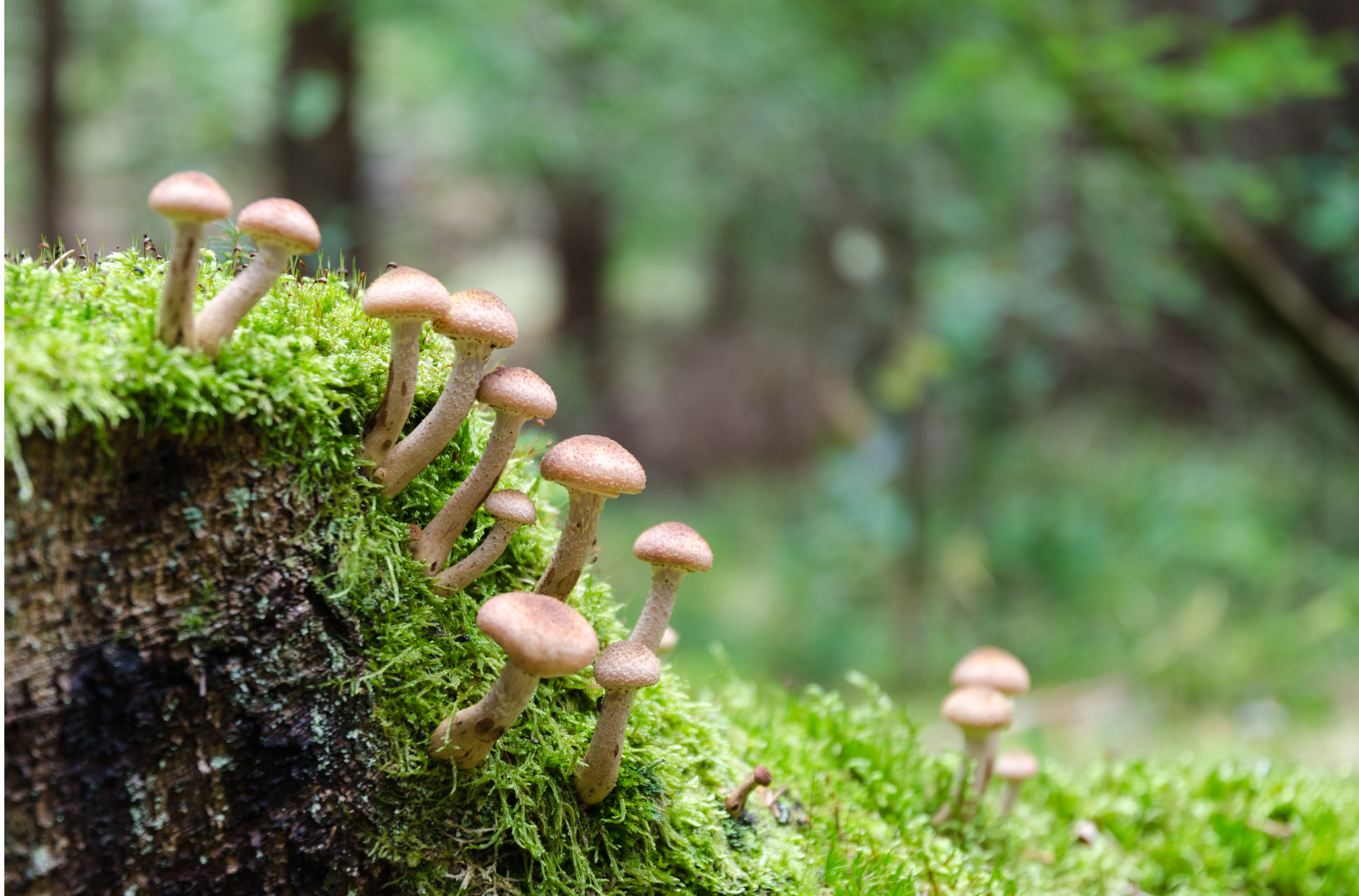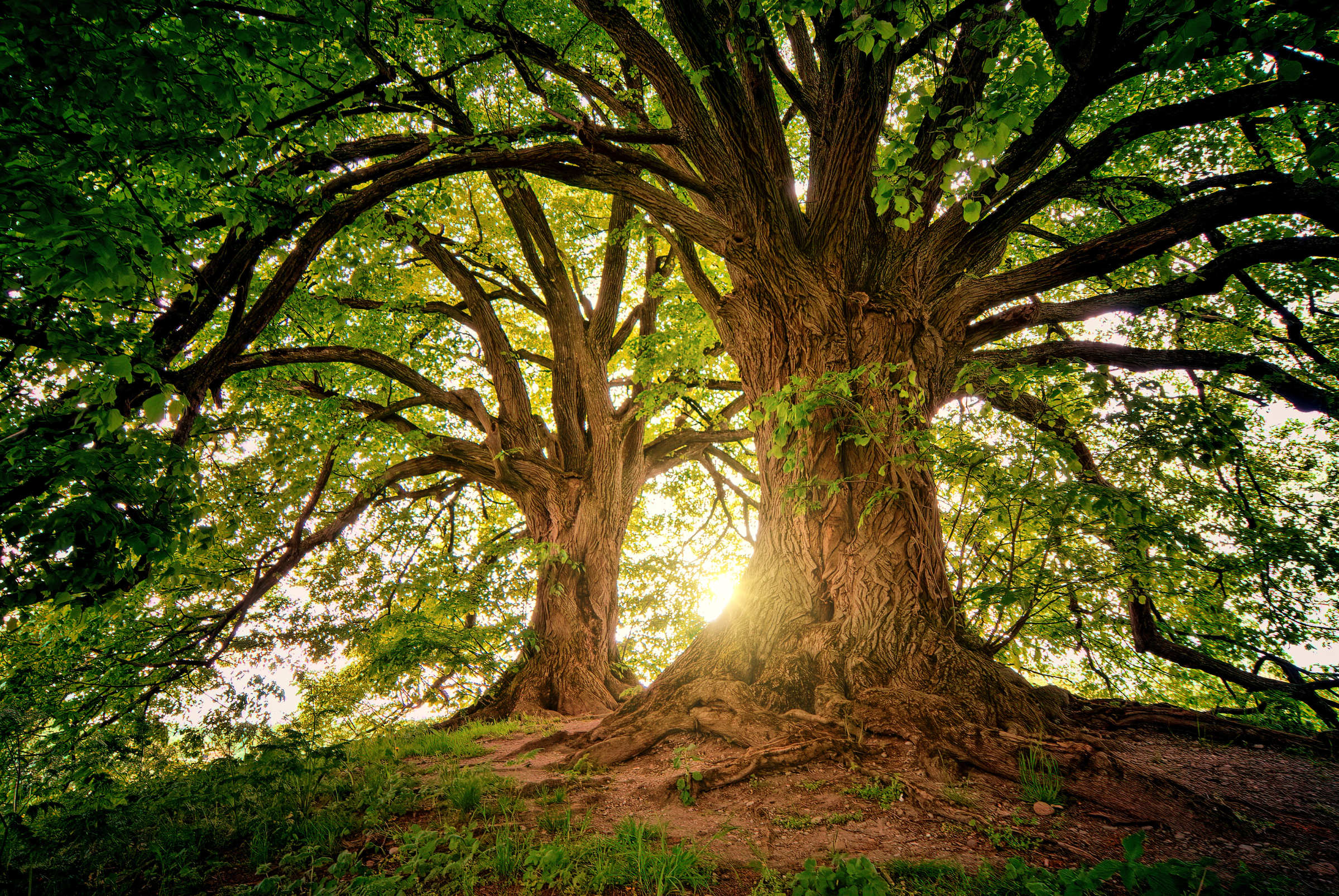By Michael Collins, Teravana

Trees do not think like humans in how we solve math problems or choose the words we use to express ourselves. But when we use our instincts to grab an umbrella or allow one of our friends to speak first, we think like trees.
Trees see themselves as existing together. They know they need one another to survive and withstand weather and disease. When trees grow in the forest, their branches extend up and out until they encounter the branches of their neighboring trees. Instinctually, they are mindful of others. Trees also have above-ground abilities like knowing when to shed their leaves and when to change leaf color in relation to the weather and timing of the seasons.
Beneath the ground, roots allow for communication between trees. Microscopic fungi combine with the root tips of trees, and the trees feed the fungi with sugars taken in during photosynthesis. These sugars fuel the mycelium as they gather nutrients and connect with other trees. A 1997 article in Nature dubbed the underground root and fungi network the “wood wide web.” The ability of soil, fungi, and roots to connect trees has been studied and debated by scientists as one of the reasons forests and trees succeed.
Peter Wohlleben, in his book, The Hidden Life of Trees, writes about coming across a gigantic 400 to 500-year-old beech stump. Even though it was a stump, it still showed some life and green chlorophyll on its surface. Wohlleben concludes the surrounding trees kept the stump alive through the underground system.
Another phenomenon is salmon feeding the forest when salmon spawn and die. A reasonable question is how can decomposing nutrient and energy-rich salmon pulled out of rivers by hungry animals and left on the banks of a river or stream affect the surrounding trees. Undoubtedly, animals enrich the soil with their excretions, but it is challenging to understand how the carcasses can feed the trees.

An article in Smithsonian Magazine, “Do Trees Talk to Each Other?” (2018), follows a team in British Columbia that studies trees that grow near salmon streams. They conclude that when an animal such as a bear eats salmon and leaves the decomposing salmon in the forest, trees absorb the remaining nutrients and share them through the underground network. This team refers to “an interlinked system: fish-forest-fungi.”
Are trees talking to one another through their roots? Studies show there is reason to believe they are sharing, whether it is water or nutrients or an instinctual warning, and that is at the heart of communication. Mycelium works in the underground soil, and as we continue to understand more, we will discover how fungi connect the forest.
REFERENCES
Grant, Richard. Do Trees Talk to Each Other? SmithsonianMag.com. 2018. https://www.smithsonianmag.com/science-nature/the-whispering-trees-180968084/
Simard, S., Perry, D., Jones, M. et al. Net transfer of carbon between ectomycorrhizal tree species in the field. Nature 388, 579–582 (1997). https://doi.org/10.1038/41557
Wohlleben, Peter. The Hidden Life of Trees: What They Feel, How They Communicate: Discoveries From a Secret World. [United States], Greystone Books, 2016. Wohlleben, Peter.